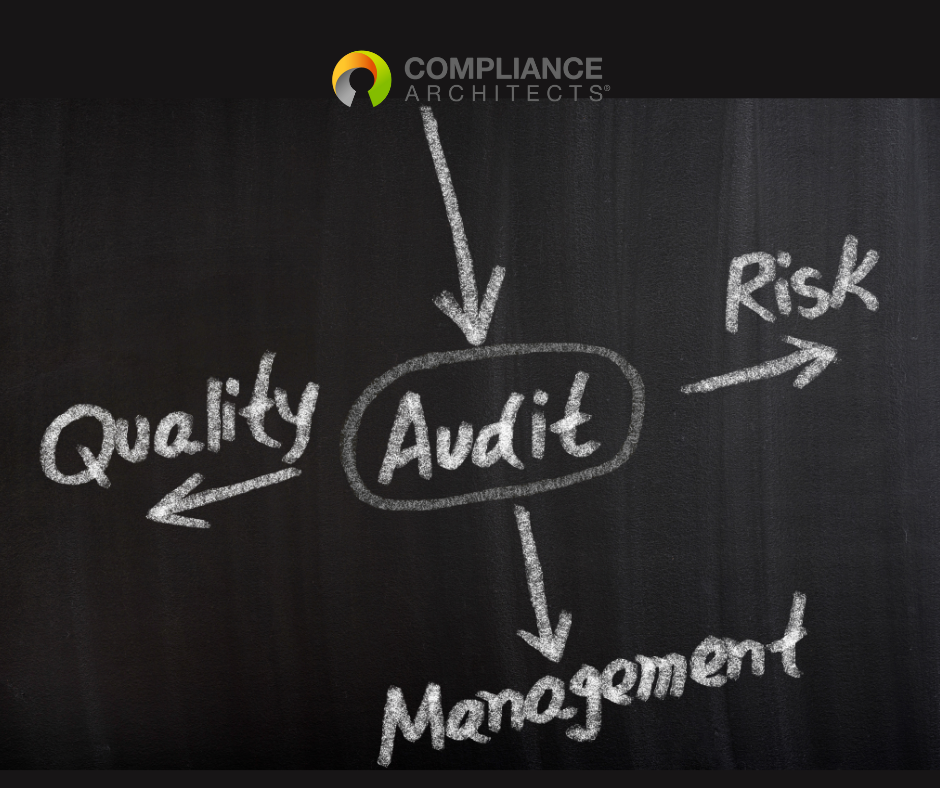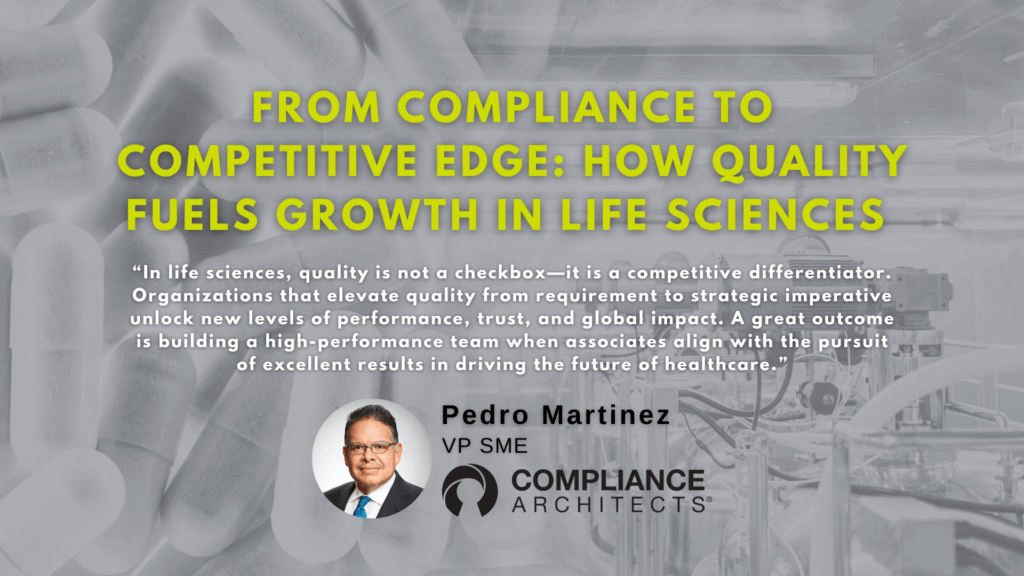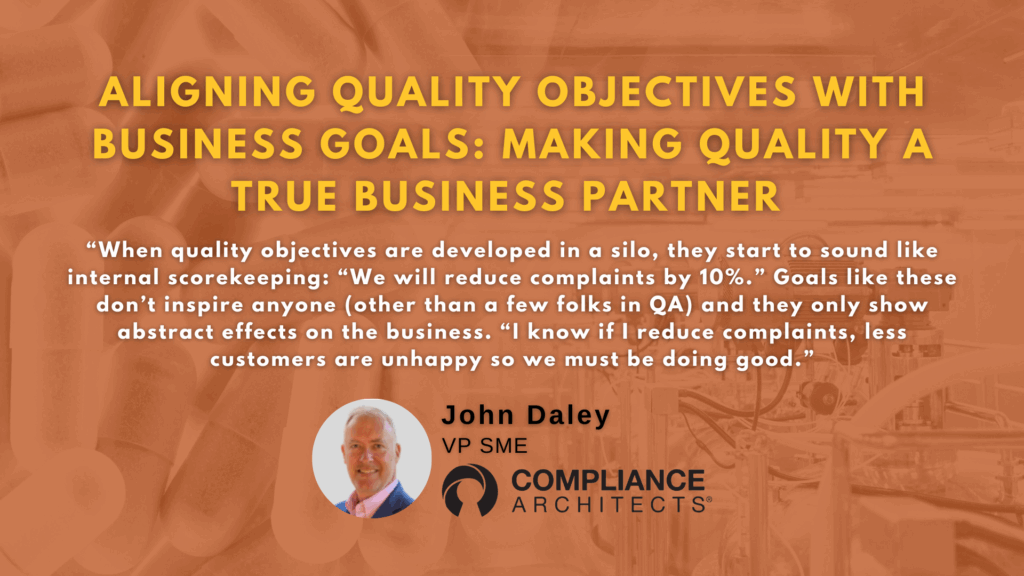Clinical research is undergoing a profound transformation, driven by technological innovation, globalization, evolving regulatory expectations, and a growing emphasis on data integrity and subject protection.
At the center of this evolution is the need for robust oversight mechanisms, especially for clinical investigator site audits, which serve as a cornerstone of Good Clinical Practice (GCP) compliance.
As the FDA continues to refine its Bioresearch Monitoring (BIMO) inspection program, recent trends highlight the shift from traditional, checklist-style audits to risk-based, process-centric evaluations.
The agency has been increasingly vocal about the importance of sponsor oversight, investigational site accountability, and the quality of trial data used to support product approvals.
At Compliance Architects, we believe audits should verify compliance and drive meaningful improvement in clinical quality systems.
That is why we have built an audit model that integrates risk prioritization and quality management principles, designed to surface root causes, not just symptoms.
This article explores how our approach to auditing clinical investigator sites aligns with current FDA inspection trends, elevates the effectiveness of corrective and preventive actions (CAPAs), and ultimately supports safer, more reliable, and more ethically sound clinical research.
Why It Matters: The Regulatory Landscape is Evolving
The FDA’s Bioresearch Monitoring (BIMO) program emphasizes integrity, safety, and reliability in clinical trials. With the growing use of risk-based monitoring (RBM) and new draft guidance (June 2024) clarifying expectations for BIMO inspections, sponsors and investigators must ensure that their quality systems are always inspection-ready.
Key FDA Concerns Include:
- Data integrity lapses
- Inadequate informed consent documentation
- Poor investigational product accountability
- Lack of oversight and effective CAPA implementation
Our audit philosophy directly addresses these areas by prioritizing processes that impact patient safety, data reliability, and ethical compliance.
The Basics of Clinical Investigator Site Audits

Clinical investigator site audits are a cornerstone of GCP compliance. They are designed to protect trial participants and verify that the data collected is credible and regulatory-ready. These audits provide independent assurance that trials are conducted in line with protocols, ethical standards, and applicable laws.
Clinical investigator site audits are a cornerstone of GCP compliance and a critical safeguard in conducting clinical trials. These audits serve a dual purpose: first and foremost, to ensure the protection of human subjects participating in the trial; and second, to verify that the clinical data being generated is accurate, credible, and capable of withstanding regulatory scrutiny.
At their core, these audits offer an independent, objective evaluation of how trials are conducted at the site level, confirming adherence to the protocol, Good Clinical Practice (GCP) guidelines, and all relevant regulatory requirements.
By doing so, they provide sponsors, regulators, and ultimately patients with confidence that the investigational product’s safety and efficacy data are trustworthy.
These audits assess whether the study is being appropriately conducted in real time and contribute to the overall readiness of a clinical program for regulatory inspection, including the FDA’s Bioresearch Monitoring (BIMO) program.
When done well, site audits uncover early signals of operational breakdowns, training gaps, or systemic process flaws, allowing sponsors and CROs to course-correct before such issues escalate into regulatory findings.
In today’s environment of global trials, decentralized studies, and increasingly digital data capture systems, the importance of robust, process-driven clinical investigator site audits has never been greater.
They are not simply a regulatory checkbox, but a strategic compliance mechanism that supports data integrity, patient safety, and organizational readiness for marketing approval.
What Are They?
A clinical investigator site audit is a systematic, independent review of the activities at a clinical trial site. The goal is to assess:
- That informed consent processes are ethically and properly administered
- Compliance with the study protocol, so that protocol deviations are identified and addressed
- Adherence to GCP guidelines
- Accuracy and completeness of trial data
- Protection of human subjects
- That adverse events are captured, reported, and followed up appropriately
Why Are They Conducted?
These audits are essential to:
- Protect the rights and safety of trial participants
- Ensure data integrity and regulatory compliance
- Confirm that the investigator and site staff are qualified and adequately resourced
- Identify risks or non-compliance and recommend corrective actions
When to Conduct Clinical Site Audits?
Audits can occur at different stages of a study:
- Pre-study audits: To evaluate site readiness
- Routine audits: To monitor ongoing trial conduct
- For-cause audits: Triggered by concerns, deviations, or adverse events
- Close-out audits: To assess overall compliance at the end of a study
How Are They Performed?
A typical audit includes:
- Review of source documents, informed consent forms, CRFs, and protocols
- Interviews with investigators and site personnel
- Review of investigational product storage and accountability
- Evaluation of adverse event reporting
- Assessment of record-keeping and data accuracy
After the audit
Following the completion of an audit, auditors issue a comprehensive report that outlines observed findings, categorized by severity, typically as critical, major, or minor. Each finding clearly describes the issue, the impacted process, and the associated risk to subject safety, data integrity, or regulatory compliance.
The audited site is then required to develop and submit a Corrective and Preventive Action (CAPA) plan, addressing the root causes and outlining steps for resolution and prevention. Sponsors are responsible for reviewing, approving, and overseeing the implementation of these CAPAs. In many cases, sponsors may also conduct follow-up audits or targeted reviews to verify that corrective actions have been effectively executed and that systemic improvements are sustained.
This post-audit process is not just about closing gaps; it is a critical opportunity to reinforce quality standards, improve trial conduct, and enhance inspection readiness.—
From Checklists to Root Cause: Our Risk-Based, Quality-Focused Audit Model
Traditional audits often rely on static checklists. Our model incorporates real-time risk assessments, evaluating not just what went wrong but also why and at what stage.
Using quality systems thinking, we analyze whether deficiencies occur during:
- Planning (e.g., unclear protocols or training gaps)
- Execution (e.g., protocol deviations or data entry delays)
- Verification (e.g., ineffective monitoring)
- Corrective Action (e.g., superficial CAPAs)
This approach ensures audit findings aren’t just reported—they’re contextualized, allowing stakeholders to take action at the system level, not just the symptom level.
The Shift to Process-Level Auditing: A Practical Example
Consider a scenario where an institution repeatedly encounters data integrity issues. A standard audit might recommend retraining. Our approach digs deeper, revealing that an overly complex EDC system or staffing shortages may be at fault. The result? A CAPA that improves process design, not just user behavior, preventing recurrence across multiple trials.
The Role of Quality Culture and Governance
Achieving sustainable improvement in clinical research compliance requires more than just checklists and SOPs. It demands a strong foundation of quality culture and governance. These elements create the conditions for continuous improvement, effective issue resolution, and lasting change across the clinical trial lifecycle.
A mature quality culture open to cross-functional learning
A culture that embraces transparency, cross-functional collaboration, and a commitment to learning from mistakes is essential. Organizations must foster an environment where quality is seen not as a department but as a shared responsibility across teams.
Empowered global process owners
Process owners are vital in driving Corrective and Preventive Actions (CAPAs) across functional and geographic boundaries. They are accountable for maintaining process consistency, adapting systems in response to emerging risks, and ensuring that root causes are addressed at the systemic level.
Engaged functional leaders
Leaders must go beyond passive acknowledgment of audit findings. They need to own the resolution process, allocate resources, and implement meaningful improvements that address underlying issues, not just symptoms.
Audit teams with a process mindset to evaluate process failures
Auditors should be trained to identify and assess process breakdowns, rather than focusing on individual errors or assigning blame. They highlight where and why processes failed, enabling the organization to respond strategically and constructively.
Why Independent Audits Matter
Third-party audits are essential to:
- Avoid conflicts of interest
- Uncover issues before the FDA does
- Verify vendor compliance (e.g., CROs, labs)
- Protect investments in drug development
- Strengthen SOPs, TMFs, and data systems
Our CA team provides:
- Mock BIMO inspections
- SOP and GCP protocol reviews
- Clinical site, CRO, and vendor audits
- TMF and database audit services
- Support for ethical approval documentation
Preparing for BIMO or GCP Inspections? Here’s Our Checklist Approach
We audit across core domains:
- IRB documentation and subject protection
- Protocol adherence and source data verification
- Investigator qualifications and staff training
- Drug accountability and electronic systems (21 CFR Part 11)
- CAPA effectiveness and follow-up
We tailor audits to your study phase, therapeutic area, and risk profile, ensuring your entire GCP ecosystem meets FDA and ICH expectations.
Looking Ahead: The Future of Clinical Audit Is Process-Centric
As regulatory expectations continue to evolve, auditing must do more than detect non-compliance; it must strengthen your clinical quality system.
At Compliance Architects, we don’t just audit, we partner with you to:
- Enhance your QMS
- Embed continuous improvement
- Make inspection readiness a way of working, not a once-a-year event
Need Clinical Investigator Site Audit Support?
Let’s talk. Whether you’re preparing for a BIMO inspection, enhancing your Risk-Based Monitoring framework, or seeking independent oversight of CROs or vendors, our experts are here to help. Contact us using the form below.





